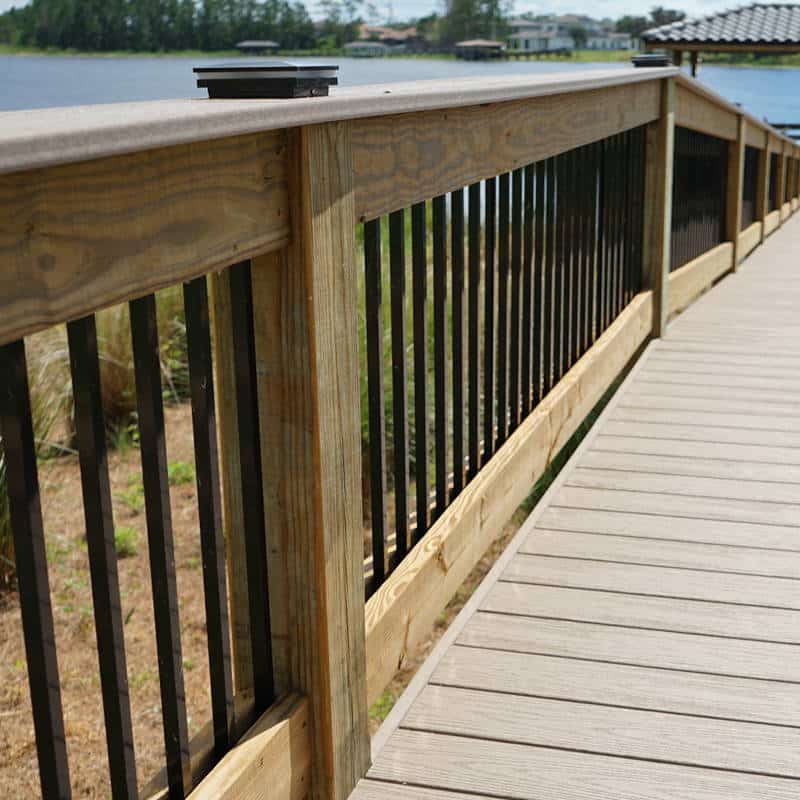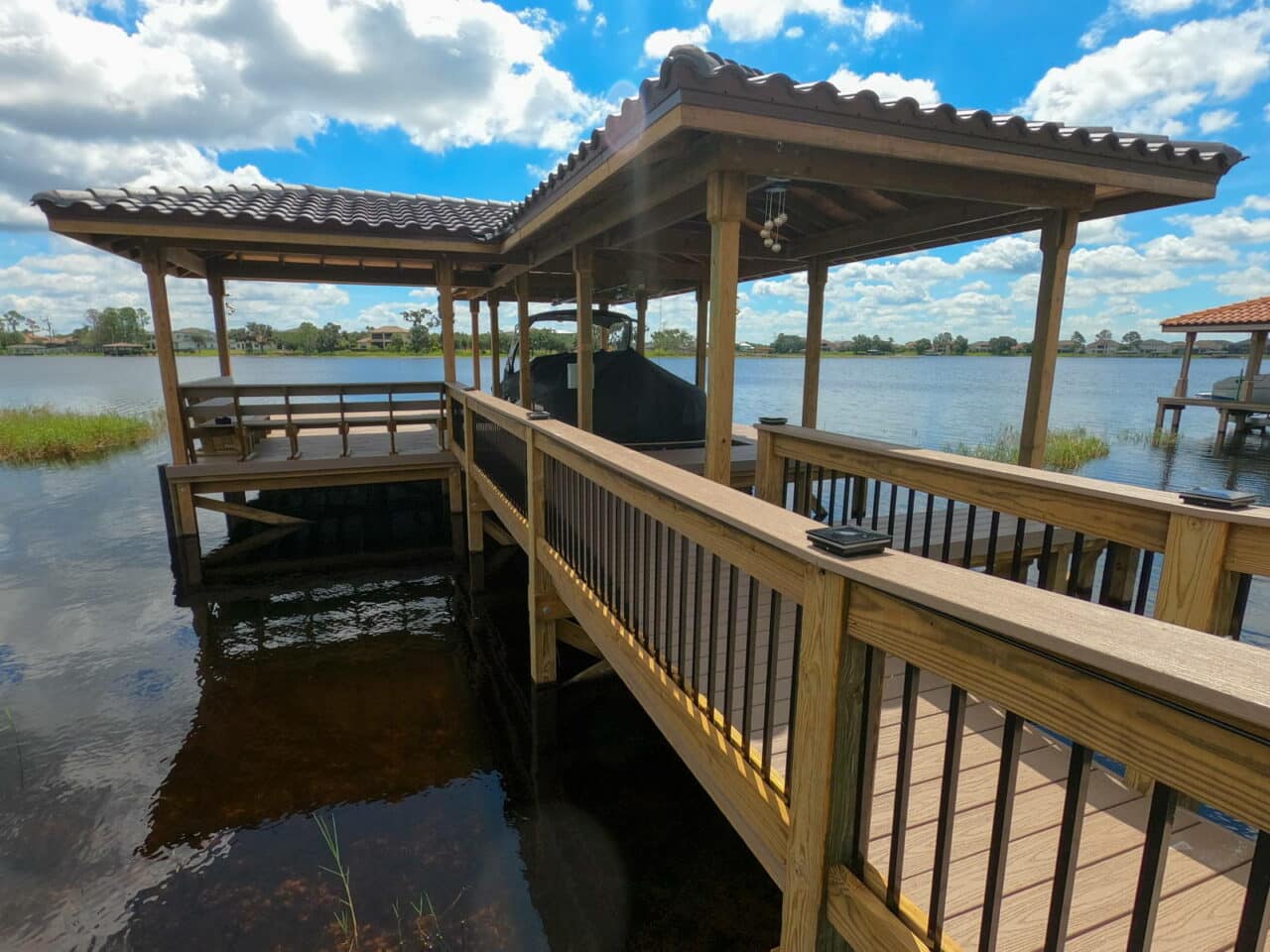Dock Handrails
Boat dock handrails serve two critical purposes in dock design – preventing falls and providing secure access. These safety features are important for waterfront properties with a high risk of slips and falls. These design elements also contribute to the visual appeal of your dock, enhancing its overall look and feel.

Dock Handrails: A Foundation for Safety
- Dock Handrails: Railing helps prevent accidental falls and drownings, especially for children, pets, and older people. It provides a physical barrier and adds a layer of protection beyond just supervision.
- Handrails Systems: These are more than safety features; they provide some peace of mind. Handrails offer sturdy support and contribute to lowering the risk of accidents, making access to your dock more secure.
- Gates: When building a dock for a waterfront home, gates provide a protective barrier and control access to your boat and dock. This helps deter children and pets from entering the dock.
- Slip-Resistant Decking: Embrace reliability with our advanced non-slip surfaces, offering steadfast footing even in the most challenging conditions.
- Sturdy Materials: We select materials for their strength, durability, and ability to withstand the rigors of the marine environment, crafting docks that stand the test of time.
Materials for Dock Handrails & Framing
When considering materials for handrails or framing in dock construction, the choices significantly impact the dock’s functionality and aesthetic appeal.
Several styles and colors are available to match existing architecture. It can enhance curb appeal and beauty while also providing safety. Handrails are an amenity home buyers look for, especially for waterfront properties. It increases a property’s desirability and resale value. Aluminum and composite materials better withstand the tropical climate of Florida, including heat, moisture, storms, and hurricanes.
Cable Railing Materials

Cable railing often use stainless steel cables due to their strength, durability, and minimal maintenance needs. They offer a modern look, don’t obstruct views, and withstand harsh marine environments well.
Here are different types of cable railing:
- Wood: Provides a classic, natural look but requires regular maintenance to prevent weathering and decay.
- Aluminum: Lightweight, corrosion-resistant, and low maintenance, aluminum frames are popular for their longevity and modern appearance.
- Stainless Steel: Offers exceptional strength and resistance to rust and corrosion, ideal for maritime environments, though it can be more expensive.
Picket Railing Materials

Pickets can be crafted from various materials, each offering distinct benefits. Here are the frame types:
- Wood: Timeless and versatile, wood pickets can be customized easily but need regular treatment to combat moisture and UV damage.
- Synthetic (Composite): These materials mimic wood’s appearance but are more durable, resistant to rotting, and require less maintenance, though they might lack the authentic feel of natural wood.
Each material and frame type presents unique advantages, catering to different preferences, budgets, and environmental conditions, ensuring a suitable option for every dock design.



